Tucked away in a secluded corner of the mid-Essex countryside dwells a tiny wooden church: The church of St Andrew, Greensted-juxta-Ongar (or Greensted church for short). At first glance, one might suppose this is merely a quaint little church, not to dissimilar from the other churches that populate the rural parishes of mid-Essex where a white wooden spire-tower is characteristic. Picturesque, yes, but worth travelling miles to see? No, not really. However, those who conclude as such are mistaken — very mistaken — for this little church is very special indeed. So special in fact, that it is (in my book anyway) one of the most valuable and important church buildings in the world. And I come armed with good reasons that embolden me enough to make such a high and lofty claim…
Age. That is the evidence I put forward to buttress this little churches claim to international renown. Greensted church is old. Very old. So old that it is reputed to be the oldest wooden church in the world and the oldest wooden building in the whole of Europe! However, the pedant must make his few allotted qualifiers. It is only the split oak beams that survive from the ancient beginnings of this church which form part of the wall to the nave. What’s more, their age is disputed with some scholars putting their origin as far back as the 6-7th Century BC1 but most go for the more “modern” age of 11th Century BC2.
The rest of the church is an amalgamation of later additions and renovations. Some are Norman in provenance, such as the flint footings to the chancel, but most are Victorian (the brickwork chancel) or Stuart (the white weatherboard spire-tower). Though most of the original features of this ancient church have been lost, this patchwork of eras and ages, each adding their own distinctive features and patterns and drawing upon the local resources available at the time, only adds to the charm of the building. Down throughout the ages, each custodian of this special church has made their necessary improvements and left their mark for us to decipher and enjoy. Such is the beauty of Britain.
But though the truly ancient parts of this church are few and far between, we must not let this caveat spoil the sense of wonder and awe that arise deep within us when we come into contact with something so ancient. These ancient oaken beams have, throughout the many centuries, welcomed multitudes of unknown worshippers into this hallowed building, whose names have been forgotten by the passing of time or erased by water upon lime on the faces of the gravestones in the church yard. It is a privilege to be able to brush one’s hand across them today and feel the history beneath one’s fingertips.
A final feature outside the church is worth noting before we enter in. Fortuitously, it lies just outside the door under the old oak beams. It is a special stone grave, the grave of an unnamed Crusader from the 12th Century BC, reputed to have been a bowman. It is fitting that such an ancient resting place is to be found beneath these equally ancient beams and beside this most ancient of churches.
Quietly opening the old wooden door and stooping to enter the church is like stepping back in time and into a fairytale. The visitor will silently gasp at how dark it is inside. The dappled light strains to shine through the little stain-glass windows and the dark wooden beams and wooden pew boxes accentuate the shadowy but far from gloomy atmosphere — the red velvet carpet throughout dispels any notion of gloominess! One feels as if they are inside a little wooden hut in the deep dark woods of our childhood imaginations, even if the summer sun is blazing just outside the door.
The illusion that everything is in miniature is aroused here. The pew boxes are tiny, the roof is low, and the entire church can be traversed in a matter of seconds. To worship here would be an intimate, even a cosy experience, where one feels deeply connected to their fellow brothers and sisters whom they share the ancient walls with — along with the rest of creation just outside the door (or the noisy swallows nesting under the chancel roof!).
It is fitting, then, that a rural church made from the finest materials of creation should draws one’s gaze to the earth that the Saviour walked and to the creatures and neighbours whom they share the world with. No trace can be found here of the high and lofty transcendence that cavernous cathedrals evoke. There is a time and a place for such sublime spectacle. But not here. Not here in Greensted among these ancient oaken beams.
The resonance with creation is ever-present in this church. It is literally carved into its very fabric. The Victorian-era supporting roof arches and beams are adorned with carvings of oak leaves and creeping ivy, but the most famous carving enacts a story. A story of the harmony of creation with mankind; a story of extraordinary loyalty and fidelity: the story of King Edmund and the Wolf.
The legend proceeds as follows.3 King Edmund of East Anglia was slain by an invading army of Danish Vikings after refusing to fight with weapons following the example of Christ who forbade Peter to fight with the sword (hence some call him Edmund the Martyr). The King didn’t stand a chance; he was decapitated by the ruthless men and his head was thrown into the woods never to be seen again. Or so his killers thought.
A little while later, Edmund’s loyal followers sought for him, crying “Where are you, friend?” They were startled by a cry emanating from the trees: “Here! Here! Here!” and were even more startled to find the King’s head being guarded by a faithful wolf who had protected his monarch’s head from being eaten by the other animals inhabiting the wild woods. The legend goes on to claim that Edmund’s men were able to miraculously reattach his head to his body, though sadly the King remained deceased.4 The reason for the carving in this church is that King Edmund’s remains were said to have rested here in the church on their journey to his final resting place in Bury St Edmunds.
Though the veracity of such a story may be disputed, I am inclined to think that some aspects may be true. As I have argued before, I strongly believe we have no warrant to dismiss stories of creatures miraculously serving man out of hand, especially when Scripture contains many such encounters where beasts have helped and served man. Moreover, the loyalty of canines to their masters is well established within our cultural imagination with stories abounding of loyal dogs refusing to leave the sides of their dead or dying masters. Perhaps a faithful wolf did guard the head of King Edmund. It certainly wouldn’t surprise me.
Animals are sometimes the best teachers of virtue; in this case, what it means to be loyal and faithful. God has written His laws and virtues into the very fabric of his creation, and each creature is a potential teacher to the student who observes faithfully the lessons enacted by beast and flower.
There is one final tiny little detail I wish to bring to your attention as we draw our exploration of this wonderful church to a close. On one of the outer split-beams of the oak wall is a little notch complete with a little window. It is a feature that you can easily miss unless you look carefully (a disposition I thoroughly recommend you adopt when looking round any old church). Some claim that this is merely a little peep hole that the bishop could have used in olden times to see who was approaching the church. Others claim that this is an example of a leper’s squint, a little window which would have allowed contagious lepers to join in with the sacred worship whilst remaining safely isolated from those inside. Though researchers have concluded the former use is more likely, I can’t help but think that lepers may have used the peep hole too.
Thus, like the age of the church itself, this feature’s purpose is contested. I suppose this just goes to show how little we moderns can know with certainty about the peoples and eras that came before us. There are limits to our knowing. Some things may just have to remain mysteries.
http://www.greenstedchurch.org.uk/history.html
See Simon Jenkins, England’s Thousand Best Churches. Penguin.
It is disputed whether Edmund died a martyr’s death or whether he died in battle.
https://en.wikipedia.org/wiki/Edmund_the_Martyr#Death_and_burial

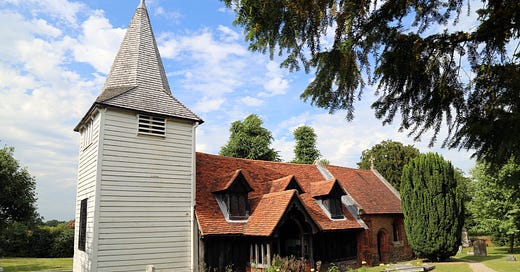



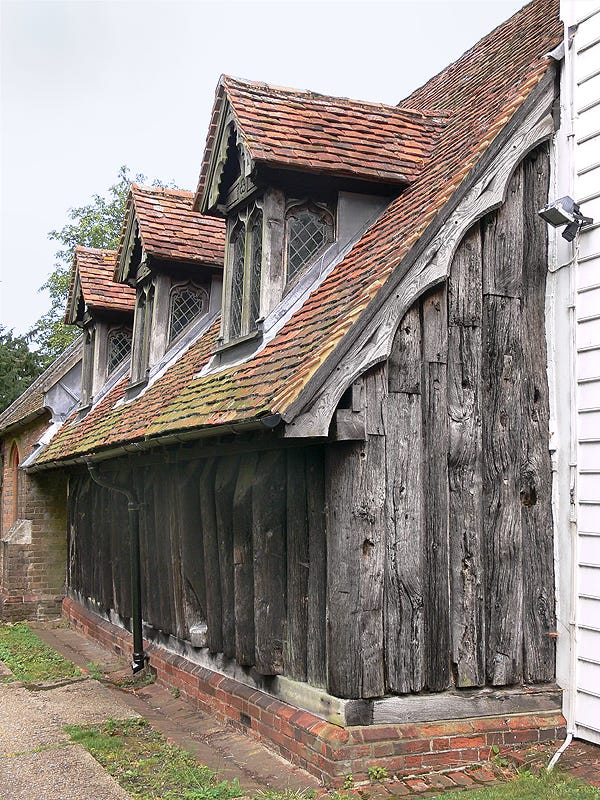
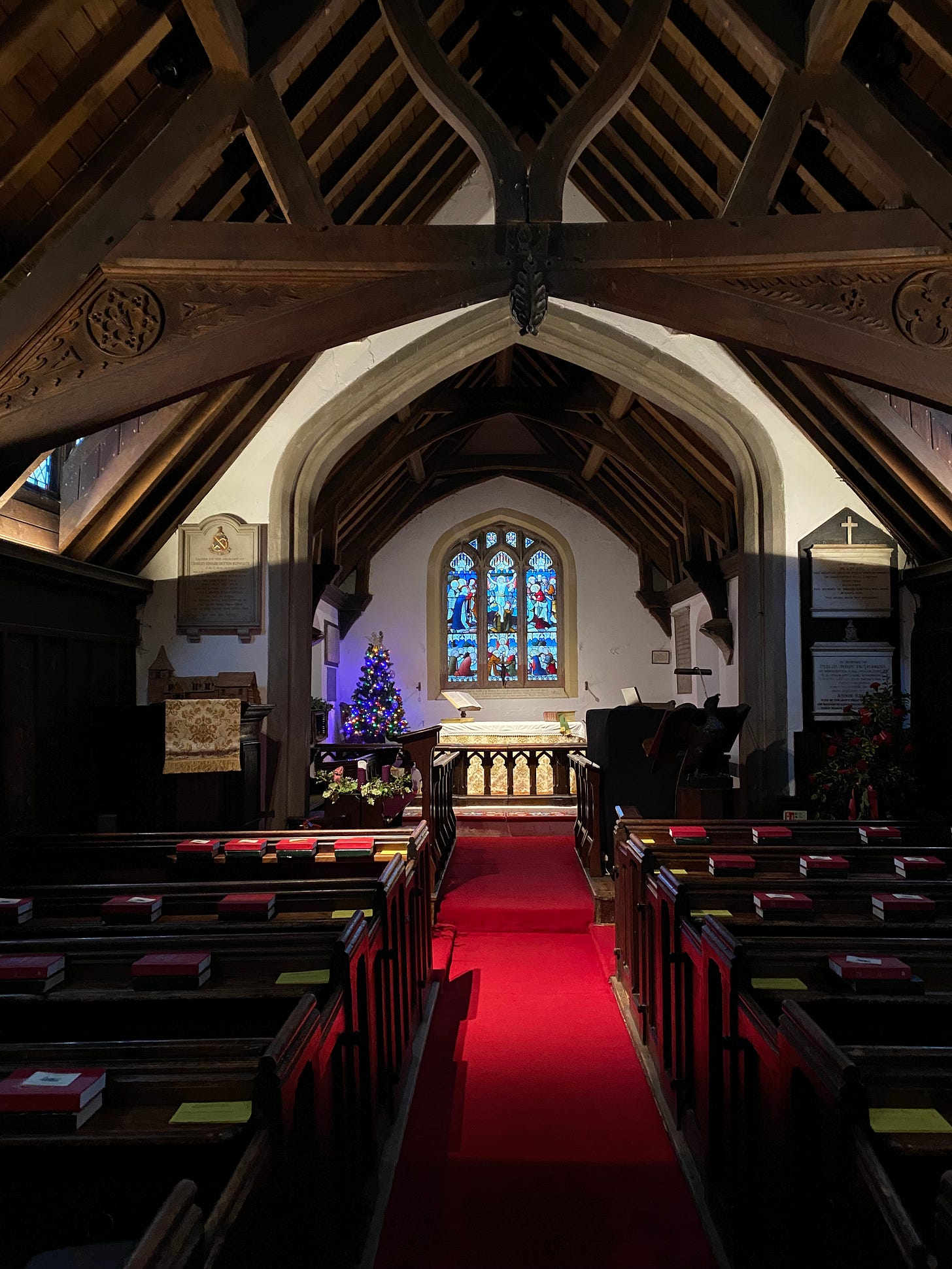
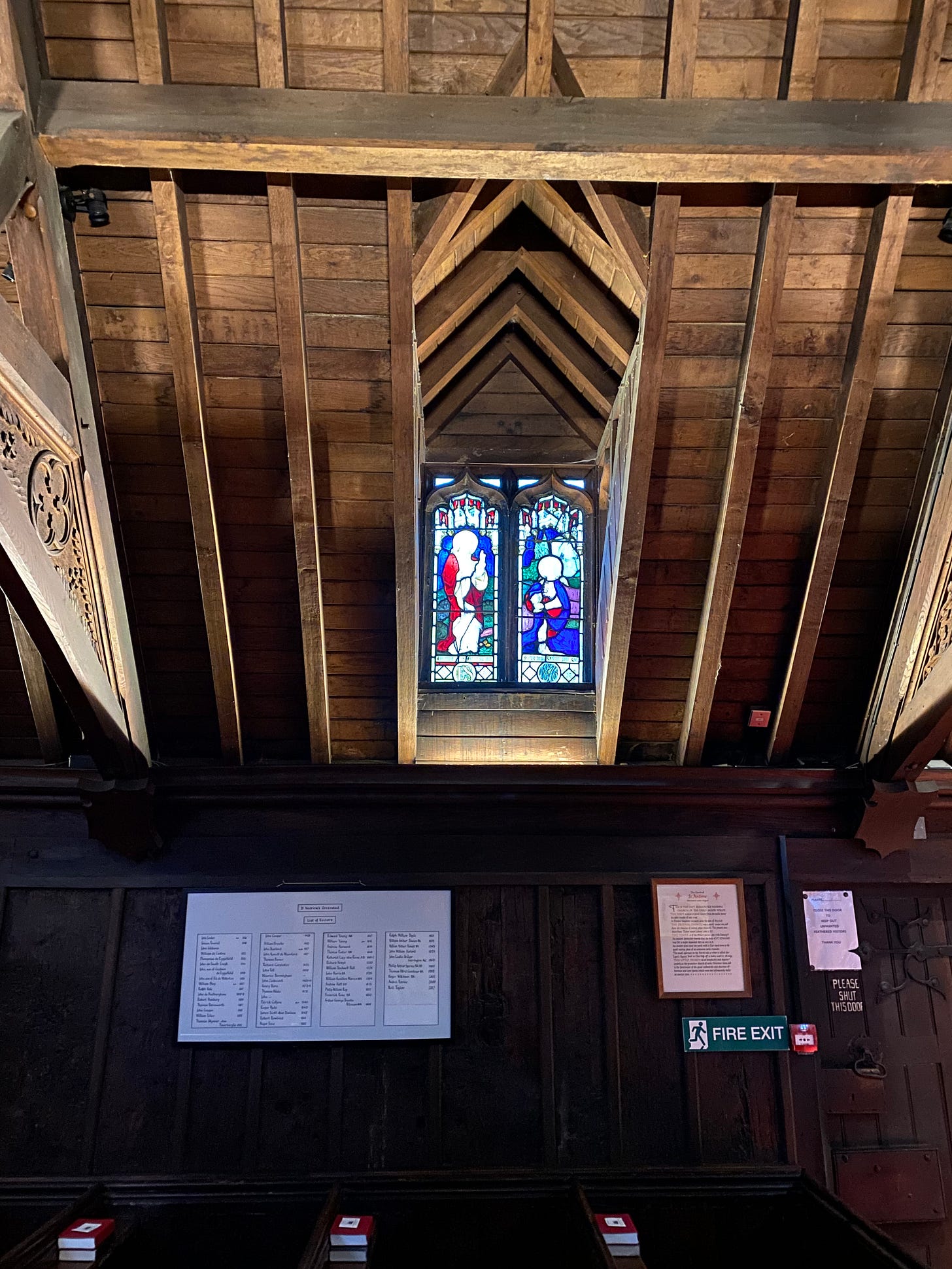

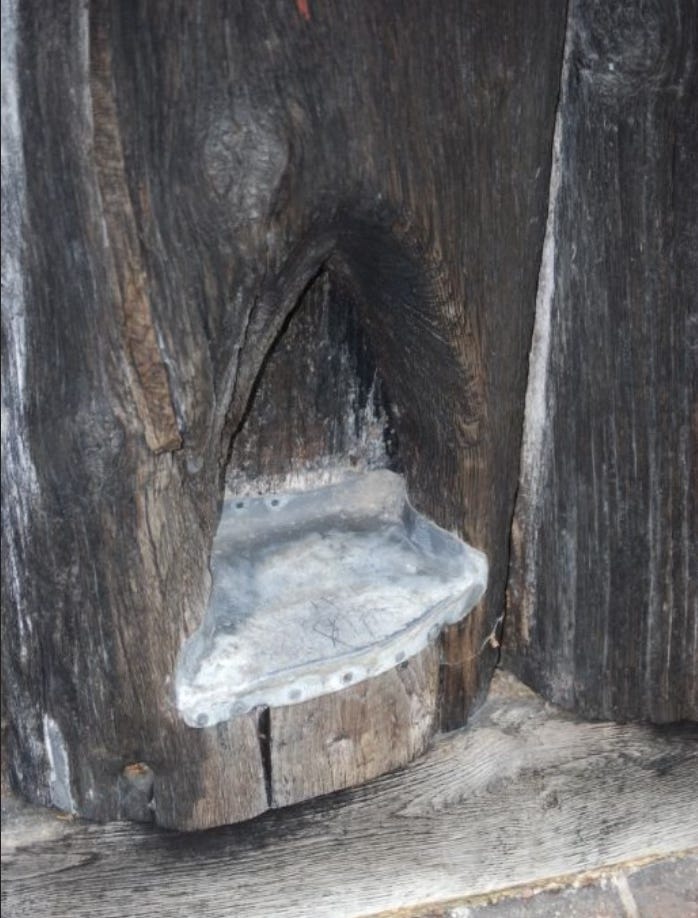
Great start. Wonderful story.